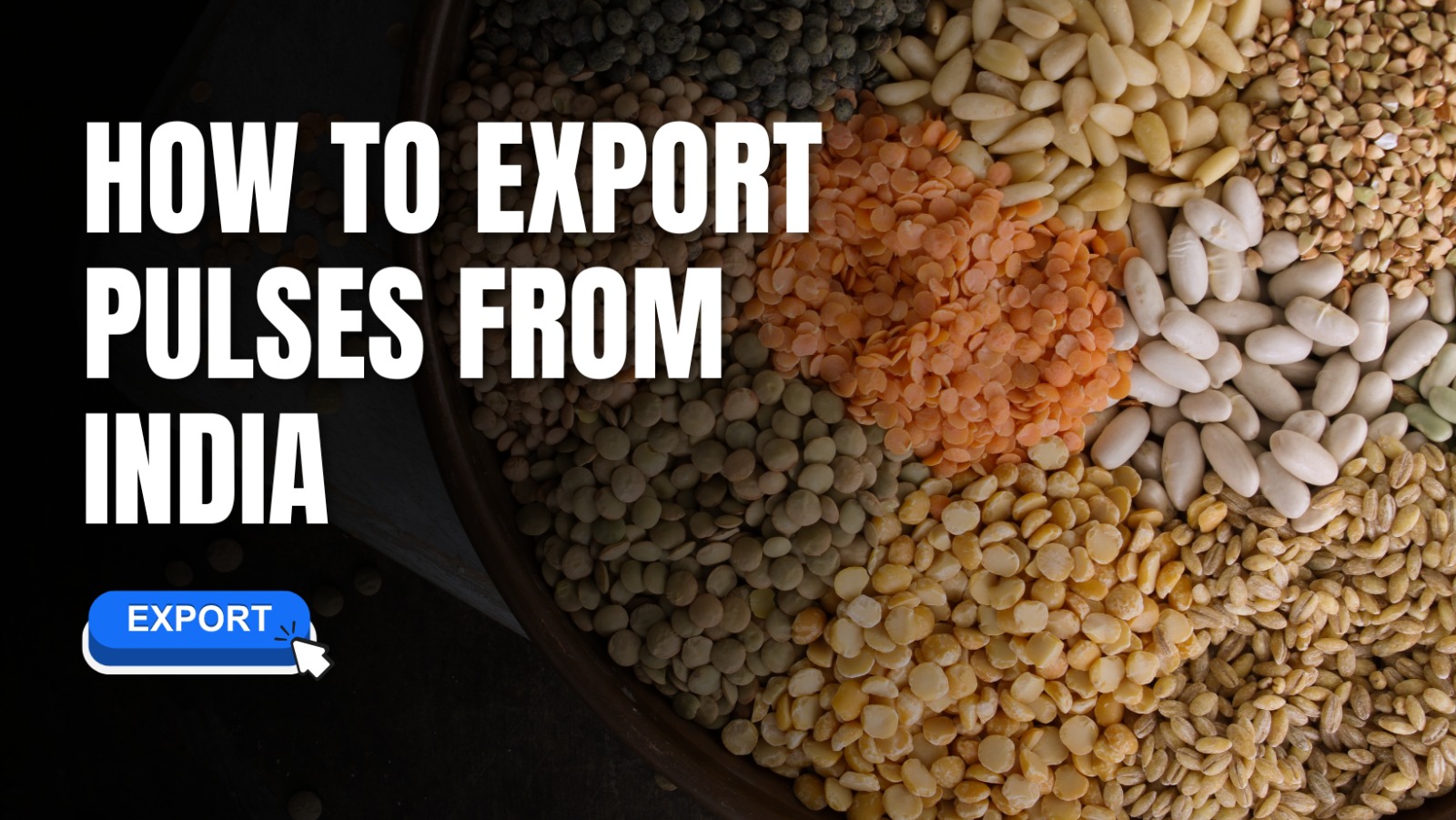
Exporting pulses can be a profitable venture, but it requires careful planning and adherence to various regulations. This guide will walk you through the essential steps to successfully export pulses from India.
Export Statistics of Pulses
- Export Volumes: In 2023, India exported approximately 3 million tonnes of pulses. The export volume is projected to grow by 5% in 2024, reaching an estimated 3.15 million tonnes.
- India has exported 775,024.48 MT of pulses to the world for the worth of Rs. 5,397.85 Crores/ 672.32 USD Million during the year 2022-23 (Source: DGCIS).
- Export Destinations: Indian pulses are exported to various countries including the UAE, Bangladesh, USA, UK, and Canada.
Export Duty and Regulations
- Export Duty: The export duty on pulses varies depending on the type of pulse and the destination country. As of now, the duty ranges from 0% to 10% for most pulses, but it’s essential to check the latest updates from the DGFT.
- Regulatory Requirements: Ensure compliance with the specific phytosanitary regulations and import standards of the destination country.
Growing Regions and Varieties
- Major Producing States: Pulses are primarily grown in states such as Madhya Pradesh, Uttar Pradesh, Rajasthan, Maharashtra, and Karnataka.
- Varieties: India produces a wide range of pulses including chickpeas (chana), pigeon peas (arhar/toor), mung beans (moong), urad beans (black gram), lentils (masoor), and peas (matar).
1. Market Research
It’s crucial to conduct thorough market research:
- Identify Target Markets: Research potential markets where there is a high demand for Indian pulses. Countries in the Middle East, Europe, North America, and Southeast Asia are significant importers.
- Understand Regulations: Each country has different import regulations, quality standards, and tariffs. Familiarize yourself with these requirements to ensure compliance.
2. Business Registration and Compliance
- Register Your Business: Depending on your business model, register as a sole proprietorship, partnership, or private limited company.
- Importer Exporter Code (IEC): Obtain an IEC from the Directorate General of Foreign Trade (DGFT). This code is mandatory for all exporters.
- FSSAI Compliance: Ensure your pulses meet the standards set by the Food Safety and Standards Authority of India (FSSAI).
3. Sourcing and Quality Control
- Reliable Suppliers: Build relationships with trustworthy farmers or suppliers to source premium quality pulses.
- Quality Certification: Obtain quality certifications such as ISO, HACCP, or AGMARK to meet international standards.
- Processing and Packaging: Invest in modern processing and packaging units to ensure your pulses are cleaned, processed, and packed under hygienic conditions.
4. Documentation and Legal Requirements
- Essential Documents: Prepare necessary documents including a commercial invoice, packing list, bill of lading, certificate of origin, phytosanitary certificate, and export license.
- Shipping and Logistics: Choose a reliable logistics provider to handle the transportation of your goods. Decide on the mode of transport (sea, air, or land) based on cost, speed, and product nature.

5. Finding Buyers
- Trade Shows and Fairs: Participate in international trade fairs and exhibitions to showcase your products and meet potential buyers.
- Online Marketplaces: List your products on global online marketplaces like Alibaba, TradeIndia, and ExportersIndia.
Having difficulty to finding the right market and good buyers ? Here’s the solution to learn how to effectively accomplish this. Find Buyer And Market
6. Pricing and Payment Terms
- Competitive Pricing: Analyze market demand, the quality of your pulses, and cost structure to set competitive prices.
- Payment Methods: Opt for secure payment methods like Letters of Credit (LC), advance payment, or wire transfers to reduce the risk of non-payment.
7. Logistics and Shipping
- Freight Forwarder: Engage a reputable freight forwarder to manage the logistics of shipping your pulses.
- Customs Clearance: Ensure smooth customs clearance by providing accurate documentation and adhering to import regulations of the destination country.
8. Post-Export Procedures
- Track Shipment: Monitor your shipment to ensure it reaches the buyer on time.
- Customer Feedback: Gather feedback from your buyers to improve product quality and service.
- Build Relationships: Focus on building long-term relationships with your buyers for repeat business.
Conclusion
Exporting pulses from India involves detailed planning, regulatory compliance, and effective marketing strategies. By following these steps, you can successfully navigate the export process and tap into lucrative international markets. Whether you are a seasoned exporter or a newcomer, staying informed and prepared will help you thrive in the global pulses market.
This blog just scratched the surface of the exciting world of exports! check out this helpful link: lean How to start your export business
Do Follow us on Our Social Media channels to stay ahead in your rice business.
